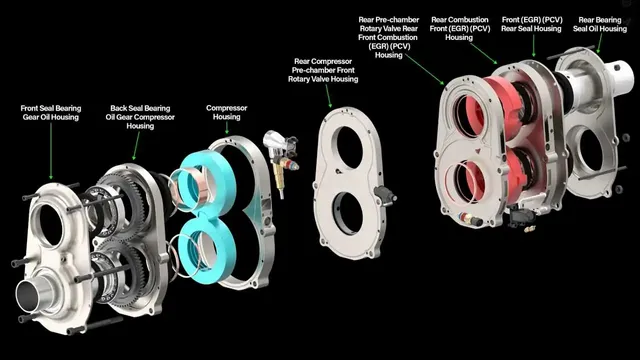Will this revolutionary system "save" petrol engines?
At this moment in history, almost every automaker is aiming for a battery-electric future, while at the same time slowly moving away from the development of new internal combustion engines (ICEs).
Yet it may not yet be the end for internal combustion engines, or at least this is the thought of Astron Aerospace which introduced the Omega 1 - a system that is nothing short of revolutionary, far from how we are used to understanding traditional internal combustion engines. Below you will find two explanatory videos of the project and its operation.
It's all about "divide and simplify"
Designed to run on a wide range of fuels, the Omega 1 is compact yet powerful and targets extremely low, if any, CO2 emissions.
A bit like the Wankel that found great support in Mazda over the years, the Omega 1 has neither pistons nor connecting rods, nor an offset crankshaft (the so-called "crankshaft"). And yet, compared to the traditional rotary, the design of the Omega 1 solves a typical problem of the Wankel which made it less efficient in terms of pollution: the overlap between the "fresh" mixture and the exhaust gases.
The Omega 1 uses a pair of combustion chambers and a pre-chamber that separates the fresh incoming mixture from the red-hot exhaust gases, so that the polluted residues of the explosion do not "dirty" the new mixture of the next cycle.
There are four rotors mounted on two shafts, which work in pairs dividing the phases of the cycle: the one in front manages intake and compression (the first two phases of a normal four-stroke engine, the "cleanest"), while the one behind combustion and exhaust - last two phases, which suffer from the presence of post-combustion polluting emissions.
The stacked rotors are connected by synchronizers, so they rotate in opposite directions but at the same speed. According to Astron, the Omega 1's design does not suffer from the same joint and welding problems as traditional motors, because it is a single block with far fewer moving and separable parts.
If on the one hand it differs from the Wankel by solving the pollution problems that prompted Mazda itself to stop production after the RX-8 in 2012, it instead takes up the possibility of combining other propulsion units in a single block to increase power. Alone, however, the Omega 1 weighs around 15kg and can produce over 160bhp for 230Nm of torque.
Doesn't mean "goodbye to electric"
If you're thinking it's just a 3D rendering, think again: Astron claims to have a working prototype, which means that maybe there's still hope for the internal combustion engine.
But then, will it be revolutionary enough not to extinguish ICE thrusters? Certainly not as we know it today, with connecting rods, valves and pistons, but it could still have important applications in the electrified future that awaits us.
After all, the infrastructure has yet to catch up for a full electric conversion, and it will take a long time to get everything ready. Systems like Omega 1 would help dramatically reduce emissions starting today, until the infrastructure for a zero-emissions future is solidly in place.
